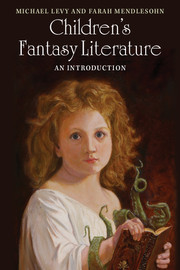Book contents
- Frontmatter
- Contents
- Acknowledgements
- Introduction
- 1 How fantasy became children's literature
- 2 Fairies, ghouls and goblins: the realms of Victorian and Edwardian fancy
- 3 The American search for an American childhood
- 4 British and Empire fantasy between the wars
- 5 The changing landscape of post-war fantasy
- 6 Folklore, fantasy and indigenous fantasy
- 7 Middle Earth, medievalism and mythopoeic fantasy
- 8 Harry Potter and children's fantasy since the 1990s
- 9 Romancing the teen
- Notes
- Further Reading
- Index
- References
4 - British and Empire fantasy between the wars
Published online by Cambridge University Press: 05 April 2016
- Frontmatter
- Contents
- Acknowledgements
- Introduction
- 1 How fantasy became children's literature
- 2 Fairies, ghouls and goblins: the realms of Victorian and Edwardian fancy
- 3 The American search for an American childhood
- 4 British and Empire fantasy between the wars
- 5 The changing landscape of post-war fantasy
- 6 Folklore, fantasy and indigenous fantasy
- 7 Middle Earth, medievalism and mythopoeic fantasy
- 8 Harry Potter and children's fantasy since the 1990s
- 9 Romancing the teen
- Notes
- Further Reading
- Index
- References
Summary
‘Inter-war’ is a politically coherent period in Europe: not a term usually used by American critics, it has a very specific cultural meaning. European history of these years feels bracketed by the two world wars. The period between 1918 and 1939 begins with depression, emerges into frivolity and optimism, crashes into the Depression, and ends with the sense from 1936 on that another European war is inevitable. It feels not like a period of peace, but a lull in which, for some, old certainties were to be clung to, while for others they were to be examined and rejected. The period saw the beginning of the end for Britain's Empire. By 1922 most of Ireland was independent of Britain, and became a full republic in 1948. In 1947 India would declare independence. But in the world of children's books this period remained predominantly an export-driven culture in which British books were sent to the colonies.
For a colonial author to be published in the UK in this period required them to be part of the UK community, as was the Australian P. L. Travers. Although a small number of books did travel from Canada and Australia to Britain, American books were yet to arrive in either Britain or the Empire, and for much of the twentieth century a child in New Zealand or Hong Kong was more likely to have read a British author than was an American child. Until very late in the period, the contained feeling of many of the fantasies discussed in this chapter reflects the period's unease, and so too does the sense conveyed in many of the texts that ‘out there’ is a dangerous place. But some of the crucial issues of the war years also appear: nationality, identities and origins, class antagonism, even the servant shortage that left many middle-class children to roam free relatively unsupervised. Yet, by the end of the nineteenth century a Canadian tradition and hints of an Irish tradition were emerging separately from the British tradition – traditions that were distinctly more rural, less contained and more engaged with the landscape than was the fantasy of Great Britain in the inter-war years.
The inter-war period is discrete in publishing terms: between 1910 and 1917 there is but one title in our bibliography.
- Type
- Chapter
- Information
- Children's Fantasy LiteratureAn Introduction, pp. 73 - 100Publisher: Cambridge University PressPrint publication year: 2016

